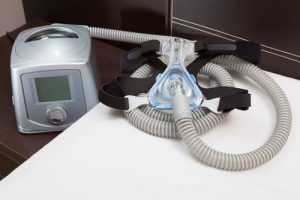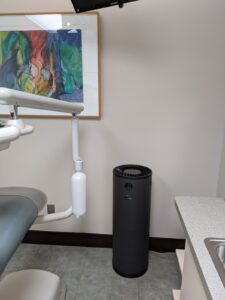 When patients suffer from obstructive sleep apnea, or OSA, their quality of life can be impacted. We understand and offer treatment to address sleep disorders, helping patients obtain the rest necessary to function properly. We actually offer two very different but effective treatment options. What’s the difference between CPAP and oral appliance treatment?
When patients suffer from obstructive sleep apnea, or OSA, their quality of life can be impacted. We understand and offer treatment to address sleep disorders, helping patients obtain the rest necessary to function properly. We actually offer two very different but effective treatment options. What’s the difference between CPAP and oral appliance treatment?
Warning Signs and Causes of Sleep Apnea
Obstructive sleep apnea develops when breathing is obstructed during the night. In some cases, the soft tissue in the back of the throat can become overly relaxed while we sleep. The tissue subsequently collapses, blocking airflow. The patient wakes up once the brain registers a sudden lack of oxygen. These frequent interruptions can leave the patient feeling exhausted. Risk factors include excessive alcohol consumption, obesity, gender (males more frequently than females) and even age (usually 55 and older). Warning signs may include snoring, waking up choking or struggling to breathe, moodiness, daytime drowsiness, or difficulty focusing on a task at work or school.
CPAP Machine
In addition to exhaustion, sleep apnea can also lead to a greater risk of high blood pressure, stroke, and heart attack. Treating the issue is paramount. We may recommend a CPAP machine. A bedside machine will be connected to a hose attached to a mask. The mask is worn over your nose and mouth. When turned on, the machine pumps air through the hose and into your nose and mouth, ensuring your breathing continues uninterrupted.
Oral Appliance
An alternative to the machine (or sometimes used in conjunction) an oral appliance is worn during sleep. Similar in appearance to a nightguard, the device actually brings the jaw forward slightly to keep airways open. The patient then enjoys uninterrupted breathing and a solution to OSA.






